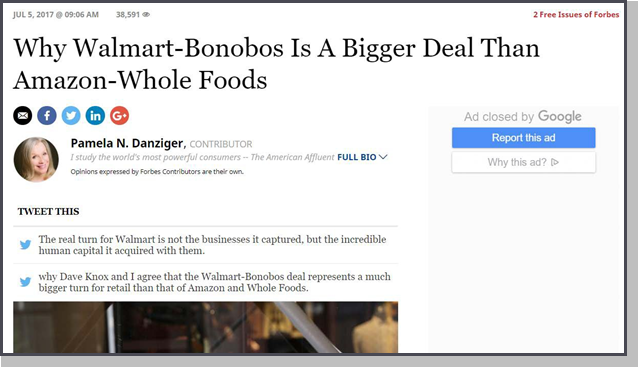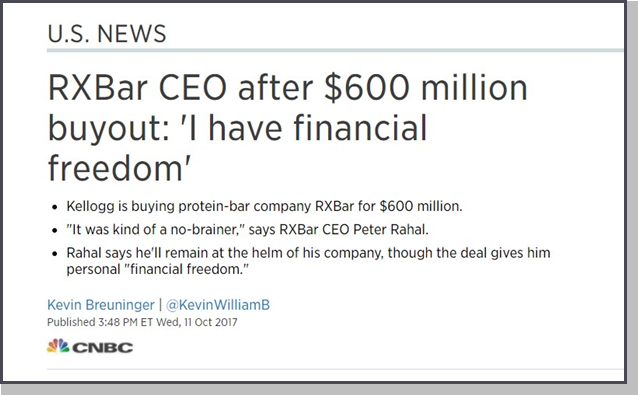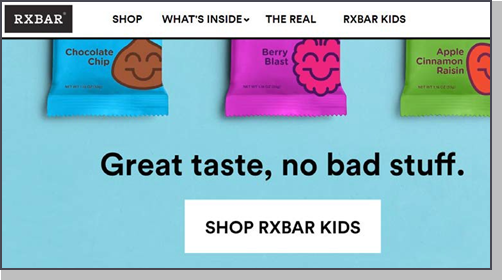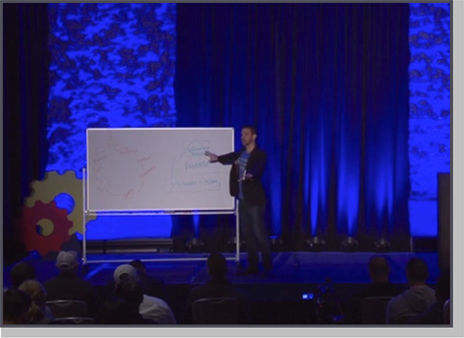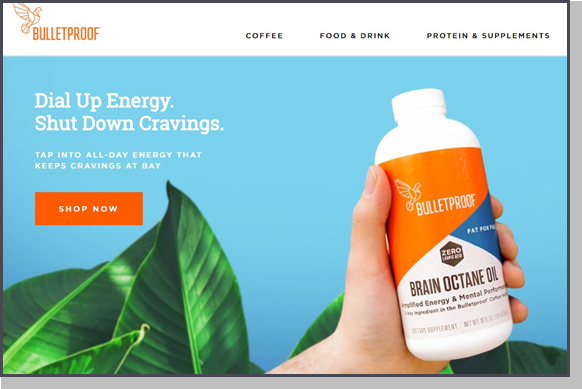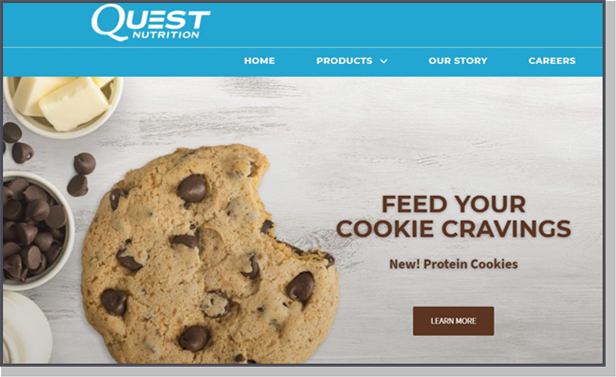Ryan Moran
Ryan Daniel Moran is the founder of Capitalism.com, an online accelerator for internet businesses. He has built and sold multiple ecommerce companies, totaling more than
$10 million in cash received. He is best known for helping over 100 entrepreneurs build seven figure businesses quickly, and helping them to invest the profits for passive income.
Who needs passive income, smart passive income? I feel really humbled and excited to be where I am today, and to have been invited as a speaker at Traffic and Conversion Summit 2018, to be able to share what I know about going from zero to 8 figures, using Amazon and direct response.
I think it was eight years ago I got this email, from this guy by the name of
Ryan Deiss. You guys ever heard of this guy? You do? Don’t open that email!
Apparently, I had bought something, I didn’t remember buying anything, but I had bought something that got me a ticket, to this event called Traffic and Conversion Summit, and it was the first Traffic and Conversion Summit. For me I thought there were like a thousand people there; they tell me now there are about a hundred fifty. It seemed like a big deal to me and I had been doing, what we call the ‘internet thing’, for a couple of years and seeing how real businesses were built completely changed my brain and it completely changed the course of my career.
And at the end of the event, “scam artist” Ryan Deiss says, “if you’re an affiliate…,” which I was at the time. He says,
“If you’re an affiliate marketer or if you don’t have a product and customers who buy from you frequently, you don’t have a real business.”
At this point I had been doing a lot of search engine optimization. I had been doing a lot of affiliate marketing. I had a few digital products and I guess that means I don’t have a real business. So, it was at the end of that event that they did their big pitch for this thing that they were starting called, War Room Mastermind; and I’m told that I was the first applicant for War Room; and also the youngest in history.
I think I was 22 years old, and I applied for War Room and I had no business being in this room. I went to be in this room because I just wanted to see how entrepreneurs who were running seven and eight figure companies were running them, because I was making six figures out of college but just kind of figuring it out and guessing.
So, I go into this room, and in the first meeting I pulled Perry Belcher aside…
I don’t even know why they let me in by the way, but I pulled Perry aside
and I said, “Hey Perry, if you were me and you were young, and if you were figuring this game out what would you do?” And he said, “As many chicks as possible,” and then he said,
“You know what I would do, I’d sell stuff. Everybody else is selling hopes and dreams and taking on clients, people are always gonna buy stuff.”
And that sat with me for a little while and I had made all of the money that I had made in my career up to that point by getting really good at channel optimization.
So, Google was a channel. I was pretty darn good at search engine optimization, that’s where all the eyeballs were hanging out at the time. Back in the golden days, there was this site called Google.. Joogle, might have been a soft g but anyway, it was where people search… look it up on Wikipedia.
I was also good at channels like ClickBank, where people were selling digital products. So, I had figured out the channel optimization piece of finding out where the buyers, the eyeballs and the traffic was and I was just putting my stuff in front of those eyeballs and those buyers. So, when Perry says to me, “If I were you I’d sell stuff.” I said, “Okay, where is all the stuff being sold?”
And it was right around that time that Amazon was starting to really explode and so I became fascinated, where e-commerce was starting to go, where the puck was heading.
So, I decided to go all in on releasing physical products on Amazon.com. Now there was one other thing that Ryan Deiss said to me when we were on the phone and I was asking him a little bit about structuring businesses and building a real business. Ryan said something kind of in passing, that stuck with me and it really changed my brain he said:
“Most people get into this world because they want the lifestyle of living… laying on the beach or partying and drinking and celebrating all the big wins you’re having. You get to do that, but you get to do it when you sell. Meaning you sell the business, you get to relax, you get to have your time, when you sell the business.”
These three things that Ryan and Perry said stuck with me, and I put them all together in my mind. I focused on building a real business, and as a result I looked at channels that were selling real stuff. This to me meant e-commerce and Amazon.com, with the intention of selling a business. This was the context through which I’m starting to look at building one of these businesses.
So fast forward a few years, I called up three buddies that I had always wanted to work with over the years. Each one of us came up with three ideas, launched three physical products, brands, and started selling on Amazon. com. Two of which I sold, one of them to a private equity group for eight figures, another I still hold to this day.
That context has completely changed the way that I look at launching businesses and structuring them for sale.
Along the way I was documenting what I was doing on a podcast called Freedom Fast Lane and as a result of people subscribing to that and listening to that, from what people tell me and self-reporting, I know we can count over a hundred people building seven figure businesses. I also know of a
few people in our mastermind or in our community that have sold for eight figures. And, I have one student who blows my mind. His business is on the market right now for 72 million dollars. It’s him and his wife, I think they have one full-time employee. They started the business three and a half years ago, completely on Amazon. I don’t even think they have a website. I don’t know if they’ll get the full 72 but, they have interested buyers.
So, all this to say, what I’m going to lay out for you today is the complete customer loop and the complete vision of what it looks like to go from zero to eight figures; or from zero to a business that you can sell for eight figures, using direct response and specifically, Amazon.com.
Now, I’m agnostic to Amazon, I’m agnostic to the path that gets us there. What I focus on and what fascinates me, is looking at where the buyers are, looking at where the puck is headed. Getting in front of those customers and putting products where they’re already hanging out and maximizing those channels. So, it’s important for us to look at where the puck is heading
right now. Please understand that if you are in direct response, if you’re in digital marketing, you have a very, very unique skill. You have a very coveted skill and it’s of getting in front of eyeballs.
It’s getting in front of people, putting a message in front of people, putting a product in front of people. How many of you have ran a good ad? Sent an email out? If so, you should know the how-to piece of getting in front of a hundred thousand people. You know what buttons to push. If the answer is yes, you should have a seven-figure income stream. All of you can have a seven-figure physical products brand, that can be sold.
Now, there’s a bit of a problem specifically in this community that I have run into and it’s this mindset of, most of us got into this game because we wanted a better life.
Most of us got into this game because we were moving away from some sort of life that we wanted to get away from. We had a vision for what we want our lives to look like. We tend to play this game of comparing numbers to one another, of saying, “who’s crushing it?” And modeling everybody else, which means that we end up, you sell something on Fiverr and then you do a thousand-dollar product launch about “how to make money on Fiverr,” and they pitch the lifestyle, and we miss the piece of building a real business.
To me a real business is measured on: Would there be a market for someone to buy this business? Can I step away from the business and somebody else acquire the business and give me a big check?
Ultimately, if you don’t have something that can be sold, I would argue that you are now in maybe even a worse position, because you will not have the exit and the lifestyle that you desire, if you desire to stop doing that business, if you desire to step away from the business. The good news is, almost every market and almost every pool of eyeballs, almost every audience, has the ability to ‘bolt on’ a physical products brand and that piece can be sold.
So, that piece, have it built independent from your main business. If you have digital products or if you are a thought leader and you have the ability to take that audience and bolt on a physical products brand, which almost every industry does, that can be the sellable piece.
So that’s where my focus has been, since the sale of my business. I now run Capitalism.com, we essentially accelerate and incubate physical products brands. I also work with influencers and people who have audiences and develop the physical print, the physical products brands for them, and we work together on that.
But I think it’s important for us to look at where we are in the state of things because, new entrepreneurs who come to me often ask, “Is there still an opportunity here? What is the state of Amazon in e-commerce?”
So very briefly, Amazon.com specifically has doubled, in the last 36 months. It’s projected to double again by 2020. But I’m fascinated by two big things that happened in the last 12 months and the first was, Amazon made a little acquisition, did anybody hear about this? What did they buy?
They bought Whole Foods, right and you’re starting to see the integration. If you walked into a Whole Foods recently you’re starting to see the integration of the two companies. They have, Amazon lockers at Whole Foods. They’re actually incentivizing you to use Amazon credit cards at Whole Foods, which is fascinating.
It is only a matter of time, when you have a product, it’s doing well on Amazon.com and then you walk into your neighborhood friendly Whole Foods, and someone in the back, is like, “Hey, these widgets are killing it in Atlanta, put them on the shelves.” Somebody at Amazon has all that data, verifies it, ships it over to the local Whole Foods and you walk in and you see your product on the shelf, and you didn’t do anything to make that happen.
It is only a matter of time, and Amazon is not done making those acquisitions, it would not surprise me if Target is next, but it is coming, where retail is completely driven by Internet data.
I’ve had a couple conversations with executives at Walmart, and if they would get their act together they could do this well, but they’re bloated with bureaucracy. They’re the only player that might be able to do this better, because they’ve done acquisitions. They bought Bonobos and they bought up a lot of boutique businesses. They would have the ability to do the exact same thing if Walmart.com ever becomes a legitimate player, which they’re really trying to do. They will have the exact same experience, where if you can prove that you have legs on something on Walmart.com, you will start to show up in 20,000 Walmarts all across the country and across the world.
It is only a matter of time before retail becomes completely integrated by Internet retailers, that is going to happen. So that excites me because all of a sudden the distribution model becomes much, much bigger. This is not just an Internet play or an Amazon play when you look at where that puck is going.
But there was another thing that happened in the last 12 months that I think is pointing to what is about to happen and it’s this. Are any of you familiar with our RXBAR? Does anybody know what they were sold for? I’ve heard 180, I’ve heard 600 million, in the hundreds of millions. They were bought by Kellogg’s. So, Kellogg’s buys what seems to be very simple, fairly new, brand called RXBAR for hundreds of millions of dollars, their profit margins were this big.
It’s not like it was that hard to rip off the product, the branding was super simple, the ingredients were on the front of the package, and that brand sold for a few hundred million dollars. What this points to me, is that there is a major interest from large corporations to start acquiring brands, even really tiny brands.
I was meeting with a private equity group in New York City a few days ago, it was started by some guys from Bain Capital and they were saying, ultimately at the end of the day what they are buying is the brand. It’s not like there’s
a whole lot of businesses that can’t be ripped off, it’s not there’s a whole lot of products that can’t be completely duplicated, it’s not like any physical product has that much of a sweet sauce to be that different in the market.
What they’re ultimately buying is the brand and the assets within the brand are things like, distribution, there are things like customer base, their differentiation, its audience, these are the things that they’re ultimately purchasing. So, us as entrepreneurs, us as business owners, if we focus on these things we all of a sudden have a very scalable and sellable brand.
And all of you, if you know anything about digital marketing, if you know anything about getting in front of human eyeballs that ultimately become purchasers, you have a very, very distinct advantage. You have a head start on being able to create one of these brands, that can ultimately be sold and there are private equity groups and there are major businesses throwing money, at even very small brands because they can see, where the trend is going.
And so, it’s almost irresponsible in my opinion, to not have your attention in this space, to see where the money and the eyeballs are going. Turns out the valuations on physical products and brands, are really high right now, because they have things like utility. Unlike a Bitcoin and cryptocurrency, they have things like utility and value. Bitcoin is the dumbest thing ever. I know I’m in the minority on that one, but if you can, show me the utility.
Hero’s Journey of the Entrepreneur
Are you familiar with the hero’s journey? This concept was first introduced in 1949, in Joseph Campbell’s highly influential book, The Hero with a Thousand Faces. Since then, many other authors have written about it, and there are many different versions of what each stage is actually called. What they all have in common, is that the stages form a circular pattern, with the start and end, being in the same place at the top.
What I am going to share with you is a simplified version of what I am going to call the “hero’s journey of most entrepreneurs.”
Call to Adventure
Where does the hero’s journey start? It always starts with a call to adventure, right?
So, this is for me, this is when I heard my mom crying in the other room because I had broken the washing machine. I was 14 or 15 years old I worked at Dunkin’ Donuts, I decided I wanted a different life, because I didn’t want to ever be worried about a 50-dollar repair on a washing machine. I worked at Dunkin’ Donuts and one of my customers gave me a copy of Rich Dad Poor Dad. I learned that 10% of the world’s population makes 90% of the wealth.
No part of me thought that was unethical or bad, I said, “Great, I guess I got to find out how to be in that 10%.”
If 10% of people provide 90% of the value, I just want to be one of those 10%. So, this is the call to adventure and then what happens?
Resistance to the Call – Meet a Mentor
You have a resistance to the call and then you meet a mentor. Donald Miller says every story is a hero’s journey, which I find interesting. Along the way, you run into problems and the mentor helps you navigate these problems. These are things like me going to Traffic and Conversion Summit in 2008 or whenever it was. You run into problems along the way, things like:
- What business model am I going to follow?
- What product am I going to sell?
- How am I going to get it to market, right?
Crisis of Meaning
And then you come down to a crisis of meaning this is, what was it all for? What am I doing with my life? Fine we have products in the world and I’m still not happy. Turns out money doesn’t solve all my problems, and then you have, what comes next? Typically, this is followed by some type of “atonement.”
Journey Home
And finally, you have a journey home. And to me, in the return to home, this is where you sell, this is where you sell your business. So, the entrepreneur’s journey in most cases, I don’t think really completes, unless you have something that comes through this entire experience, meaning you have the sale and now you can invest for passive income and do whatever the heck you want. Then you’ll realize that doesn’t make you happy and the next adventure is going to Tony Robbins, or doing Ayahuasca, or something.
So, in my opinion the business doesn’t have a complete loop, until we have this in mind – how to sell the business. Are we keeping this in mind? The return home in the hero’s journey, do we have the ability to sell and do whatever the heck we want? And if not, in this world, we’re going to be trapped.
If you have lived in this marketing world, for more than eight minutes, there are a lot of people who are caught in this trap. They’re caught right here, where they have products, they have no idea what they’re doing with their lives, they’re having crises of meaning, over and over and over again, and they cover it up with more success, and they cover it up with the next thing they’re going to do. Or they’re posting private jet photos on Facebook or something like that, trying to find the completion of the loop.
Three Stages to Eight Figures
When I talk about how to get to an eight-figure business, there are three stages, which I like to visualize as a pyramid. At the bottom, the foundation, we have our products (which are carefully chosen, and I will tell you how). In the middle of the pyramid, we have our audience. And at the top, we have what makes us different from everyone else, our differentiation.
Stage 1: Target Products
The foundation, of this business, in my mind starts with the target market and the three to five products that target market already buys. So, I was at an event once, and I said this one thing kind of offhand, and so many people have told me that it completely changed their business and it was simply this:
Three to five products, that sold an average of 30 sales a day, at an average price point of about 30 dollars, was a million-dollar business.
So, for most people, if you’re an entrepreneur or want to be one, the question becomes: How do I identify my problem, what do I want? What business am I going to be in? What product am I going to have? But for me, the question for me is always, who’s the person? And what three to five products do they already buy, that we could just put in front of them?
So, if you have an audience, if you have a personal brand, if you’ve got a digital product, and you have a very specific target market, then the question is: Okay, what three to five physical products do they already have that they’re buying from somebody else? Or what three to five products are you recommending as an affiliate?
The easy example that I’ve, used before is, if you’re in the yoga space, what’s the first thing they buy? A yoga mat, and then they buy?
So, when we’re looking at the person, the three to five products become very, very clear.
Stage 2: Find Your Audience
The next piece is the audience. If you have an audience, if you put in the time in the work to build the audience, the ability to launch products to this level, becomes very, very fast, almost scary fast. We’ll talk a little bit about why in a second.
Stage 3: Product Differentiation and Branding
And then, at the top here, at the top of the pyramid, we have the product differentiation, there we go, or what some people would call branding. And this is the piece that ultimate is going to put us over eight figures.
Now, full disclosure, we can get these out of order and be fine. For example, my favorite people to work with, are the businesses that have these two things figured out. A great example of this would be bulletproof. Dave Asprey starts a blog, he has an audience, he’s talking about various products and he comes out with bulletproof coffee, mold free coffee, that’s the first product in the brand.
Now if Dave wanted to be a coffee company his second product would have been a dark roast, but the people who are reading the bulletproof blog, were not necessarily coffee drinkers, as much as they were what? They were into high performance.
So, the next product is MCT oil and then it’s upgraded MCT oil and then that wasn’t upgraded enough, more upgraded MCT oil. It started to be supplements and now it’s the Vibe exercise equipment. Now he has this whole suite of products ranging from a $20 bag of coffee or a $15,000 retreat.
Now, that doesn’t happen if you’re a coffee company, that only happens if you’re targeting a very specific person and looking at the overall customer journey. Looking at, okay who is the person? What problems do they have? It’s your job to be the mentor. It is your job as a business to introduce the solutions to their problems, so bulletproof, has the audience, they come out with some sort of differentiation and as a result that business explodes.
These are the easiest businesses to incubate and explode and get to eight figures, because the product rollout process becomes very, very quickly. If any of you have a big audience and a differentiated brand, it’s really, really fast and easy to be able to build a sellable and a scalable physical products brand if you have these two pieces figured out.
Now, when we start at the bottom of the pyramid, if we’re just starting with a business that we want to grow to seven and eight figures a great example of this, would be Quest Nutrition.
So, six years ago Tom Bilyeu exits his software company. He is literally baking his own Quest Bars in, I think a commercial kitchen. He has one differentiating factor, and it’s that it’s a fiber-based bar, it’s perfectly macro balanced, it’s brand new to the marketplace. He has no audience, he has no attention, so what does he do? He starts to build an audience, he did it with, I think this was pre-Facebook groups, so I want to say they had a Facebook page, they did some giveaways, they built up a little audience and now, they’re able to release product number two, which, I think was their protein powders and then the chips and then the hero bars. Now they’re a billion dollar company, six years later.
These are basically the three areas that you can do in any order. I work with a lot of entrepreneurs who are well-funded and have a big vision but they’re starting at the bottom, so for that individual this is sequential and it very simply, looks like this:
- Identify the person you want to serve/market too (target market)
- Identify the 3 to 5 products they already and pick one that is the simplest
to start with
- Put it in front of the eyeballs, on channel that’s growing the fastest (Amazon right now)
And I have found in my experience that the first product, and I would say the first three to five products, when it’s at about 50 to a 100 reviews, starts to get close to this threshold of 30 sales a day, just through organic traffic and organic growth.
But, the magic elixir, the fast lane if you will, is for those entrepreneurs, who start to put their focus on the audience. If you have the ability to “hit send” and be in front of 10,000 people. If you have the ability, to put up a post on social media and have it seen by 25,000 people. If you have the ability to run Facebook Ads, or if you’re running any of the Facebook Messenger stuff
that all the kids are talking about these days. If you have the ability to run any of that direct response… This happens scary fast, and it becomes very, very simple easy and possible to do things like get reviews.
In the Amazon world, the people who are optimizing Amazon, there’s always a big debate about, what are the best ways to get reviews? Which drives me crazy, because the easiest and fastest way to get reviews is to have some background in direct response and the direct response is very simply, if you’re driving traffic to an email list and you are …
There were businesses before Amazon.com and what people did, is they did things like they threw up squeeze pages they drove traffic to the squeeze page and then they sold their physical products on their own store, and that still works. But if it’s sent over to Amazon.com, Amazon sees outside traffic like cocaine and it starts to flood and get everybody super excited. And it starts to push you up Amazon’s algorithm.
It also becomes within your control to communicate with those customers as much as you want; brand yourselves as much as you want; ask for support on sites like Amazon.com as much as you want. This is how my team and I, a team of four people were able to build, several companies that went to seven figures, one that went to eight figures and sold, because we put this much attention on audience building in direct response, to be able to control the channel and then partner it with something like Amazon.com. When the two come together, million dollar our businesses are born. When a mommy audience and a daddy Amazon come together, million-dollar audiences are born… that was funnier in my head.
All right, so if you control the audience and you send that traffic to Amazon, Amazon freaks out rewards you for outside traffic, and now you have an organic machine that is starting to produce sales and this piece, the number of products you have and/or sell, accelerates very, very quickly.
Now, when we’re looking at the top end of the pyramid, one of the things that a lot of physical product sellers do incredibly poorly is knowing how to run and lean on where they’re different. They don’t go all-in on their point of differentiation or what they stand for and the pain point that they solve. They don’t lean on those pieces, in order to capture enough of the marketplace to be able to control an audience that you can launch products to.
When I’m working with a lot of physical product sellers, they’ve got this piece nailed, they know how to put products on Amazon, and I call it “grind their way to success,” beg for reviews until they’re at that three to five products doing 30 a day and now they’ve got a million dollar-ish business. And then they say, “Okay, what I’m gonna do now is, I’m going to set up a Shopify store and I’m gonna buy Facebook Ads to sell my running iPhone holder and it’s gonna double my business because I have a second channel.” But they know nothing, about how to lean on what’s different and or what they stand for, or what pain point that they solve.
I would say that the biggest pain point of people running million-dollar businesses, is they don’t know how to make the pivot into leaning on where they’re different, so they never really get the audience.
For you direct response marketers in the room, for those of you who are doing half, of what we talk about at Traffic and Conversion, you already have this figured out, which makes it very easy to mail to something and to get this up and moving and towards a million-dollar or a 10-million-dollar business.
So, one of the things that I try to beat into people’s head is, at this base, if we’re not starting with a person, and if that person is on their own journey, then we’ve missed the point from the beginning.
For example, if we’re in weight loss and we’re selling weight loss pills or food or whatever it is that we’re selling to that market, our job is to be the mentor to the person who is already on the call to adventure. It is no one’s job to convince people to go on a call to adventure. It’s your job to serve the people who are already on that call.
It’s why all the Garcinia Cambogia people are no longer in business, right? They just tried to persuade people into a call to adventure, rather than serving the people who are already there, identifying the problems they would have, releasing products specific to that audience, and partnering it with a channel that would bring you and your business to eight figures and be sellable, so you can retire off into the sunset.
That is the magic formula.
Most marketers are really good at one piece, they’re good at the direct response piece and then there’s a lot of scrappy entrepreneurs, who just want to make money, who get the Amazon piece and they know to go find the product and put it on Amazon. Very few people, care enough about both
to combine them, but if you do that, that is how eight figure businesses are born. The reason is because Amazon rewards that outside traffic and because people are very hungry to rally behind a business and a brand that represents them as a person and speaks to their beliefs.
On top of that, if we look at what businesses are being purchased right now, if we look at the private equity groups, and where their money is going, if we look at the big brands and what they’re buying, they are buying brands that serve a very specific audience. They are not buying commodity brands, they are buying brands that have a very specific target market. They’re buying brands that have a portfolio of products and they’re buying brands that are positioned on what they perceive to be the new player in town, which is the Internet and Amazon.com.
That is where old money and big money is flowing. If you get the direct
response piece, which means:
- you have an email list,
- you have an audience that you are speaking to,
- you have a Facebook following,
- you have a digital product with people that listen to you, or
- you’re speaking to a very specific target market, through social media,
and
- you’re speaking to pain points and you have people who follow you.
Now, you take all of that, and combine it with the list of products that person and that avatar already buys and send them over to the channel that is already growing. That’s how you, very quickly incubate a seven-figure business that scales to eight fingers and can be acquired.
Please understand, that all of you, have a very, very unique skill set and it’s a skill set that big brands and old money covet, more than you realize. You have the ability to impact industries and to impact people’s lives. So many
marketers come to events like Traffic and Conversion Summit and just look at how they can extract money from the pie.
If you bring something unique and of value to the marketplace, that has either a unique positioning or a unique value offer to the marketplace, and it’s something that people consume or hold in their hand, you’re sitting on a very, very rare unique opportunity in this experience of life; because there is this changing of the guard and there is this desire for big brands to acquire even small ones.They’re looking to acquire what you build.
And you have a very, very unique skill set, that if leveraged properly at the right time, which is now, can become something that completely changes your financial future and your family tree.
I happen to be of the opinion, that if you give entrepreneurs the ability to run free, we will solve all the world’s problems. I am of the opinion that government gets in the way, that no matter who the president is, they probably do more harm than good, that if government just got the hell out of our way and let entrepreneurs do their thing, that we would solve pretty much every problem that could ever be done.
And all of you have that ability because you know how to get in front of people and use it for good. When combined with the right strategy, you have make a difference and be rewarded very handsomely for it:
- Rich Dad Poor Dad: What The Rich Teach Their Kids About Money – That the Poor and Middle Class Do Not! by Robert Kiyosaki and Sharon Lechter
- The Hero with a Thousand Faces by Joseph Campbell
- The Writer’s Journey: Mythic Structure for Storytellers by Christopher Vogler
- www.capitalism.com
- www.freedomfastlane.com
- www.warroommastermind.com






